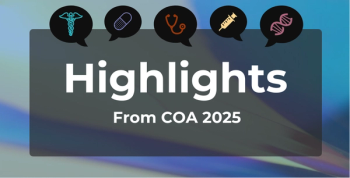
Dr Jim McDermott Discusses Objectives and Outcomes of CVD-REAL Trial
The CVD-REAL study presented at the American College of Cardiology 66th Scientific Session asked whether cardiovascular outcomes seen in the EMPA-REG OUTCOME trial could be seen in a real-world environment, and for the entire class of SGLT2 inhibitors, according to AstraZeneca’s Jim McDermott, PhD, vice president for Medical Affairs, Diabetes.
The CVD-REAL study presented at the American College of Cardiology 66th Scientific Session asked whether the cardiovascular effects of SGLT2 inhibitors in a real-world environment (RWE) setting with a broad patient population, according to AstraZeneca’s Jim McDermott, vice president for Medical Affairs, Diabetes. For more on the CVD-REAL trial, see
What were the goals and outcomes of the CVD-REAL trial?
CVD-REAL, as you know, is the first large RWE study looking at patients with type 2 diabetes, looking at the all-cause mortality, hospitalization for heart failure, comparing SGLT2s to other glucose-lowering drugs. The purpose of the study was 3 objectives.
The first was, following the results of EMPA-REG, we wanted to see if hospitalization for heart failure was actually a class effect for the agents. Secondly, we wanted to see if the patient population, if these effects were seen in a broader patient population. And then third, we wanted to see if this applied to the real-world setting.
So with these results, we did see that overall the reduction in hospitalization for heart failure, a 39% reduction in hospitalization for heart failure, and a 51% reduction in all-cause mortality, was associated with a class effect. Secondly, we did see that these results were in a broader patient population, and what I’m saying is that 87% of the patients that were in CVD-REAL, which included 300,000 patients, 87% of those patients did not have cardiovascular disease, so these findings obviously are across a broader patient population than what has been studied in the past. Third is that this does demonstrate a real-world evidence effect, that this is what’s going on when patients are being given SGLT2s, treated with SGLT2s by their physicians.
Newsletter
Stay ahead of policy, cost, and value—subscribe to AJMC for expert insights at the intersection of clinical care and health economics.








